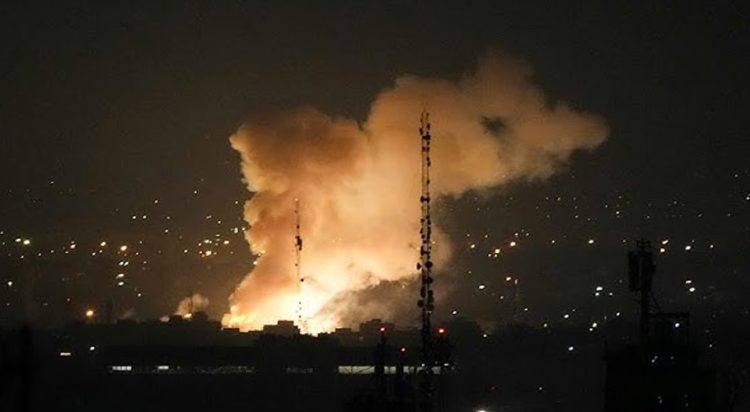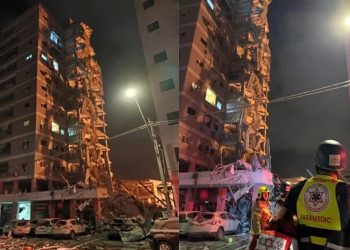Iranian media reported late Saturday evening that a massive fire broke out at the “South Pars” gas field in the country’s southern Bushehr province, following an Israeli strike targeting critical energy infrastructure.
According to Fars News Agency, the Zionist regime targeted installations at the South Pars gas field located in the port city of Kangan, Bushehr. The strategically important gas field lies on the Persian Gulf coast, near Qatar’s maritime border. Videos circulating on local social media platforms showed intense flames engulfing Phase 4 of the Pars refinery after the attack.
Multiple videos captured large plumes of fire rising from the refinery’s vicinity following the drone strike, with a significant emergency response presence at the scene. Tasnim News Agency reported that the attack hit one of the four units of Phase 14 of the South Pars field, temporarily halting gas production. The assault resulted in a production halt of around 12 million cubic meters of gas, which was being extracted from the Phase 14 offshore platform. Production will remain suspended until repairs are completed and operations resume.
This marks the first time Israel has carried out a strike deep into Iran’s southern territory adjacent to the Persian Gulf, signaling that Israel’s offensive against Iran has now entered a more dangerous and escalated phase.
Meanwhile, Iranian state television announced that Bushehr’s air defense systems responded to the Israeli aggression, although it did not clarify whether any enemy targets were successfully intercepted.
The International Atomic Energy Agency (IAEA) confirmed yesterday that Iranian authorities informed them the Bushehr nuclear reactor was not targeted during the strikes, nor has there been any reported increase in radiation levels at the Natanz nuclear site.
The South Pars gas field is one of Iran’s most significant energy assets, forming a key part of the country’s infrastructure with an estimated daily production of around 34 billion cubic feet of gas—approximately 7% of global gas output. The gas is primarily consumed domestically, supplying energy to Iran’s power, industrial, and transportation sectors.












![This handout photo released by the IRGC’s official Sepah News Telegram channel shows smoke billowing from a site bombed by Israel in Tehran early on June 13, 2025 [Sepah News/AFP]](https://mmnews.tv/wp-content/uploads/2025/06/Israel-attack-on-Iran-1-350x250.jpg)




















